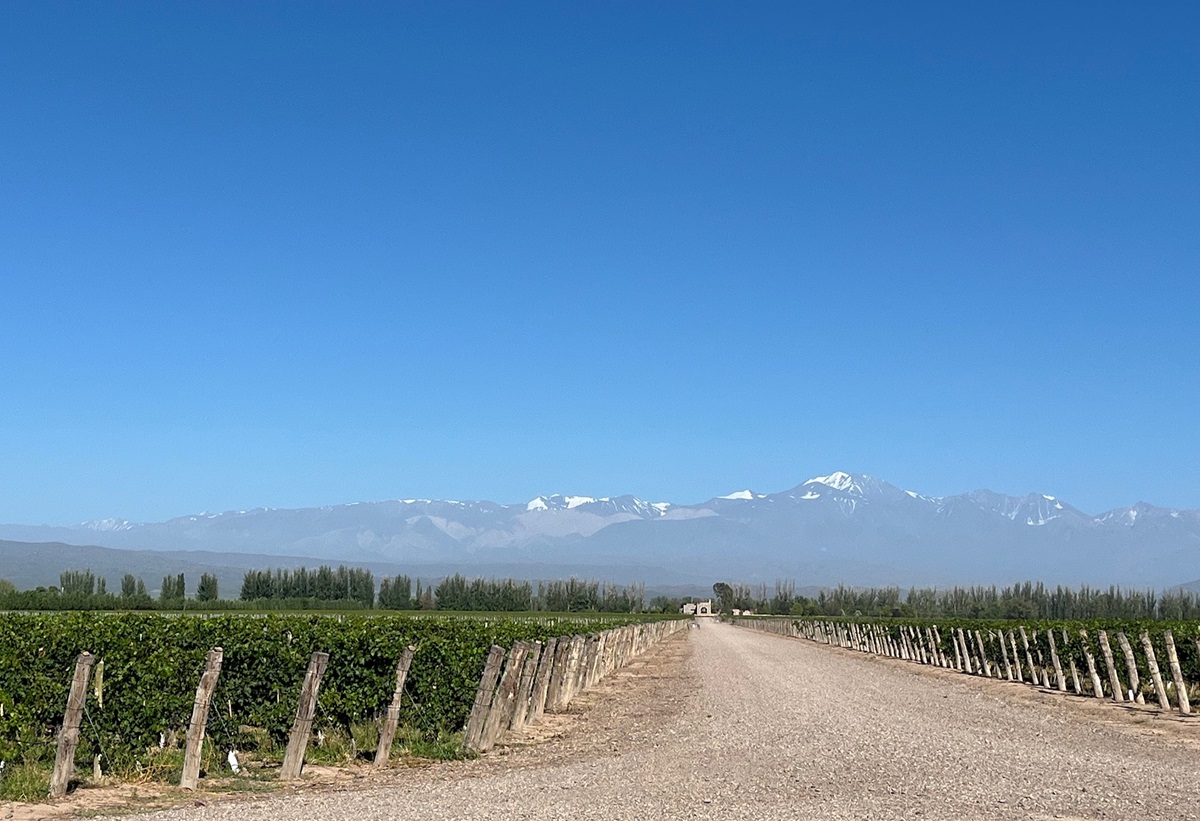WINE REGIONS TO WATCH IN 2020
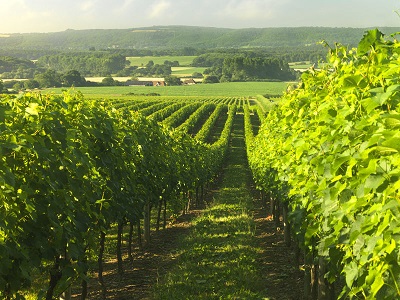
By Rose Murray Brown MW Published in The Scotsman 18 January 2020
My pick of wine countries to watch in 2020.
CHINA: I have been impressed with the latest batch of Chinese wines, although many of China’s best wines are consumed domestically and not sold in the UK. Vines are still young here, but the blanket adoration of Cabernet Sauvignon (China’s most planted grape; a late-ripener tricky to grow in a humid climate) is joined by Marselan, Cabernet Gernischt (Carmenere), Chardonnay and Italico Riesling; with new focus on matching grape to region: Shandong Rieslings and Ningxia Cabernets. Highlights are still Liaoning’s Icewines.
Recommended: Changyu-Moser, Rongzi, Helan Qingxue, Kanaan, Grace, Martin Longyan.
ENGLAND: A staggering five million vines have been planted since 2017. England now has 3,579 hectares, 658 commercial vineyards and 164 wineries. 2018 produced its largest harvest to date, but wine prices are still too high. A word of caution – 99% of English fizz is made using high quality traditional method – but there is an increasing number of Charmat (tank) method fizz sold under the ‘English sparkling’ banner, so there is an urgent need to define criteria.
Recommended: Nyetimber (Tillington vineyard pictured above), Wiston, Black Chalk, Breaky Bottom, Camel Valley for fizz; Lyme Bay, Litmus, Sixteen Ridges, Bolney, Blackbook for still wines.
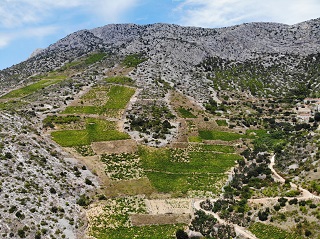 CROATIA: With over 100 indigenous grapes, Croatia is like a mini-Italy. Of all the Balkan countries, it has the most diversity and the quality is improving – from whites in particular: Malvazija Istarska, Grasevina, Kuc, Bogdanusa and Posip. Croatian reds remind me of northeast Italian reds with sour cherry fruits, high acidity and tangy freshness; Terrano and Merlot make lighter reds, whilst Plavac Mali and Tribidag (same grape as Zinfandel) make robust characterful reds. Pictured is the beautiful island of Hvar.
CROATIA: With over 100 indigenous grapes, Croatia is like a mini-Italy. Of all the Balkan countries, it has the most diversity and the quality is improving – from whites in particular: Malvazija Istarska, Grasevina, Kuc, Bogdanusa and Posip. Croatian reds remind me of northeast Italian reds with sour cherry fruits, high acidity and tangy freshness; Terrano and Merlot make lighter reds, whilst Plavac Mali and Tribidag (same grape as Zinfandel) make robust characterful reds. Pictured is the beautiful island of Hvar.
Recommended: Ahearne Vino, Matesovic, Trapan, Gerzinic, Josic, Cattunar, Franc Arman, Kabola, Badel, Bodren.
GREECE: With almost twice as many vineyards as New Zealand, it is surprising we do not see more Greek wines. This is changing, so in 2020 we will be able to try their array of native grapes from white Assyrtiko, Malagousia and Moschofilero to red Xinomavro and Agiorgitiko. Despite Greece’s parched temperatures, they make refined elegant whites as native white grapes retain natural acidity in the heat.
Recommended: Gerovassiliou, Biblia Chora, Costa Lazaridi, Thymiopoulos, Nassiakos.
MOLDOVA: According to Eastern European expert Caroline Gilby MW, Moldova is the country to watch despite its economic crisis. Ten years ago quality wine existed in homeopathic quantities, but now genuinely high-quality wines can be found, although there is a dearth in the UK. Gilby points to wineries focusing on sustainability (recently they had little money for pesticides) so soils and air are clean – with certified organic vineyards like Equinox.
Recommended: Purcari, Fautor, Equinox, Salcuta, Timbrus, Bostavan.
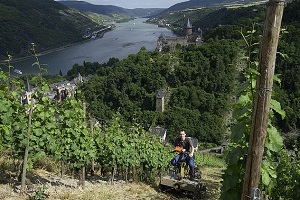 GERMANY: With increasing interest in lower alcohol wines, it’s time for German Riesling from Mosel, Rheingau and Pfalz to swing back into fashion. The Sekt fizz renaissance is also getting underway – over 2000 producers in Germany produce 2 billion bottles of fizz annually – with a new Sekt fizz statute evolving. The Spatburgunders (Germany has the world’s third largest Pinot Noir plantings) from Ahr to Baden suit those who like softly tannic, light savoury reds.
GERMANY: With increasing interest in lower alcohol wines, it’s time for German Riesling from Mosel, Rheingau and Pfalz to swing back into fashion. The Sekt fizz renaissance is also getting underway – over 2000 producers in Germany produce 2 billion bottles of fizz annually – with a new Sekt fizz statute evolving. The Spatburgunders (Germany has the world’s third largest Pinot Noir plantings) from Ahr to Baden suit those who like softly tannic, light savoury reds.
Recommended: Karl H Johner. Dr Heger, Bercher, Bernard Huber, Jean Stodden.
SPAIN: Jerez in Andalucia is my pick of the regions. Not only for its renewed focus on quality and incredible value in sherry from its small number of Spanish-owned bodegas, but we will hopefully see more single vineyard, organic and single vintage sherries – and experimentation with table and dessert wines from Pedro Ximenez and Palomino.
Recommended: Tradicion, Ximenez-Spinola, Fernando de Castilla, Urium.
And a few predictions for 2020 and beyond….
Rising temperatures, hailstorms, floods and devastating bushfires are now the norm thanks to climate change, so 2020 will be a year of some hard thinking (and acting) as to the future direction of vineyard location and sustainability. The wine world is facing critical issues with increasing droughts and lack of water, with focus on cooler microclimates, higher altitude and alternative grapes. Australia is a case in point – established on traditional French grapes without much thought to matching variety to region, now growers are looking at drought-tolerant, sunburn resistant vines which require minimal water, like Nero d’Avola which requires half the water of Chardonnay.
Some of the larger wineries need to act immediately to reduce carbon emissions. Torres wineries in Spain, Chile and US sets a good example, with tough targets to cut emissions and invest 11% of profits in electric cars and water saving – joining forces with USA’s Jackson Family Estates to create a working group of wineries worldwide aimed at cutting carbon emissions. My hope is that we will see more self-sustainable zero-carbon wineries – and mandatory listing of winery’s carbon footprint on labels (Sicily’s Donnafugata winery already do this).
Let’s hope that 2020 will see the end of heavyweight glass bottles which weigh over a kilo even when empty; Argentine Malbec producers are some of the worst offenders. We need to find ways of producing lighter bottles using less energy – and in 2020 we will see a rise in alternative packaging for fast-moving wines with 100% recyclable cans or PET plastic bottles.
Winemakers are increasingly experimenting with ‘natural wines’, using minimal technological intervention in vineyard and winery, as they were made 6000 years ago. In the last two centuries more technology and chemicals have been introduced, but now growers are moving from over-use of sulphites and blanket crop-spraying. Something needs to be done to define the trendy ‘natural wine’ term, as it currently has no certification, and is misleading, implying other wines are ‘unnatural’.
As more people eskew meat, in 2020 winemakers will focus more on vegetarian and vegan wines with improved labelling.
WHITE WINE OF THE WEEK:
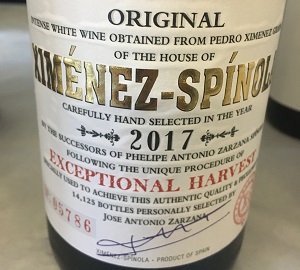 Jerez, Spain: EXCEPTIONAL HARVEST 2017 Ximenez-Spinola (12.5%)
Jerez, Spain: EXCEPTIONAL HARVEST 2017 Ximenez-Spinola (12.5%)
(£20-£25 Alliance Wine; Luvians; Fine Wine Musselburgh; Noble Green; Whisky Exchange)
Off-dry white table wine made from Pedro Ximenez grapes left for an extra 21 days on the vine – super ripe when handpicked. After fermenting, the wine is matured in American oak barrels with lees stirring for 4 months. Golden wine with figgy raisiny nose, brioche, nuts and honey undertones, fresh acidity balanced with natural sweetness.
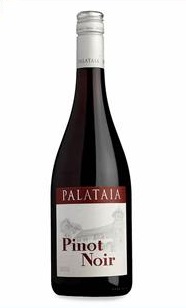 RED WINE OF THE WEEK:
RED WINE OF THE WEEK:
Pfalz, Germany: PALATAIA PINOT NOIR 2018 (13.5%)
(£9 Marks & Spencer)
Best of the cheaper German Pinots; light juicy sweetly-fruited red with cherry undertones and smooth velvety palate. Gerd Stepp used to be winebuyer for M&S, but returned home to run his family vineyard in Pfalz in southwest Germany.
Join Rose's Fine German Wine Tasting: Mosel v Rhine at The Royal Scots Club in Edinburgh on Thursday 19 March £45 www.rosemurraybrown.com
wine tastings
The perfect gift for the wine enthusiast in the family. Rose does In-person tastings too.
cellar advice
Rose does cellar valuations for private clients, valuations for insurers & bespoke portfolio management.
Related stories
March 31, 2024
By Rose Murray Brown MW Published in The Scotsman 30 March 2024 On 2 February 1659, the first wine made from grapes grown in South Africa was crafted by the Governor of the Cape, Jan van Riebeeck. He had planted vines four years earlier in the Company’s Garden near Cape Town from cuttings imported from France. Van Riebeeck’s first
March 24, 2024
By Rose Murray Brown MW Published in The Scotsman 16 March 2024 Heatwaves and bushfires were very much on the agenda when I visited Chile last month as winemakers prepared for their 2024 harvest in blistering heat and drought, with a plume of smoke from the devastating fires lingering over coastal hills. Heat and drought are the greatest challenges
March 23, 2024
By Rose Murray Brown MW Published in The Scotsman 9 March 2024 I have two glasses of Malbec in my hands from the same high-altitude vineyard in Uco valley in Argentina. I am in the Catena Institute of Wine in Mendoza with winemaker Agustin Silva. He has asked me to taste the two wines, both from the 1500m high



